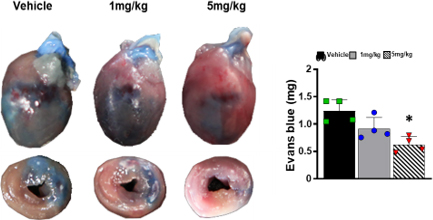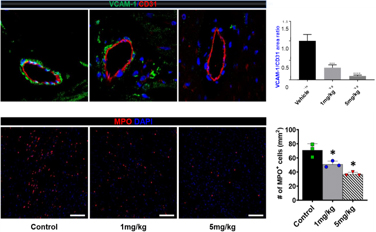Pipeline
CU101
Pipeline
CU101
CU101
Expanded indication of CU06 for Myocardial Infarction
| Sortation | content |
|---|---|
| CU101 | Expanded indication of CU06 for Myocardial Infarction |
| Indication | Myocardial Infarction (MI) |
| Unmet Needs |
• After surgical recanalization of the coronary arteries, mortality and cardiac dysfunction have been reported in approximately 10-20% of cases. • The current standard treatment is to minimize the infarct area by recanalizing the coronary artery within 2 hours after occlusion. However, edema, bleeding, and inflammation caused by oxidative stress during reperfusion account for 30-40% of myocardial damage. |
| Mechanism of Action |
• Protects myocardium and improves cardiac function by preventing cardiac edema and inflammation through cardiac micro-vessel stabilization and ROS production reduction • Fundamentally blocks hyper-permeability by stabilizing endothelial cell junctions by modifying the actin structure of vascular endothelial cells |
| Efficacy & Safety |
• Excellent early myocardial cell protection effect in the short-term model • Significantly reduction in cardiac edema caused by I/R injury • Significant decrease in endothelial cell adhesion protein expression and neutrophil influx after I/R injury • Identical effect confirmed in the pig (large animal) and rat MI model |
| Market |
• 7.8 billion US$ in 2015 • Forecasted to be 12 billion US$ by 2025 |
Indication
Unmet Needs
Mechanism of Action
Efficacy
Inhibition of cardiomyocyte necrosis in the Rat MI model
Excellent early myocardial cell protection effect in short-term model

Blocking edema in Rat MI model
Significant reduction in cardiac edema caused by I/R injury

Attenuation of inflammatory response in the Rat MI model
Significant decrease in endothelial cell adhesion protein expression and neutrophil influx after I/R injury

Inhibition of myocardial necrosis in the Mini-Pig MI model
Identical effect confirmed in pig (large animal) MI model and rat MI model
